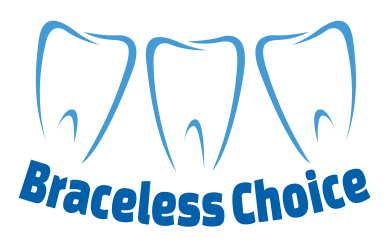Teeth are like bricks sitting on the foundation of the jaws. Jaw size, shape and position affects how well the teeth fit onto the foundation. If you mouth breathe, your tongue won’t spend enough time where it belongs – in the roof of your mouth.
Usually the tongue pushes on the palate throughout the day to cause it to grow to the correct size, shape and position. Most of this happens during growth as a child. It won’t do this if you mouth breathe.
If the jaws are the wrong size, they can’t fit all the teeth in, which can cause crowded teeth. If they are the wrong shape they won’t fit together properly, causing an a “bad bite”, a retruded lower jaw, or a small or big chin.
If the jaws are in the wrong position within the skull, the jaw joint won’t be in the right position.
What happens when we breathe through our mouths?
The nose is an air conditioner.
When we mouth breathe, it bypasses the entire air filtration and air conditioning system and drag large volumes of untreated air directly into the sensitive lung passages.
This air contains viral and bacterial matter and making us more susceptible to coughs, colds and chest infections. It also dries out and irritate the lung tissue, causing it to produce mucus to protect itself. Continued mouth breathing dries the mucus, makes it sticky and hard to shift. Mucus takes up valuable space in the airways, which are already narrowed due to the smooth muscle spasm, and wheezing is a common result.
It is really important to keep the right balance between oxygen and CO2. If we don’t have enough oxygen we feel tired, listless and have no energy. Cells die, we sleep badly, have disturbed sleep patterns and wake up tired in the morning. When the flow of oxygen to the brain is reduced, messages are sent to the diaphragm to increase breathing rate.
We breathe out (through our mouth) far more CO2 than we would through our noses and this lower level of retained CO2 makes our breathing tubes much more susceptible to spasm. The constantly low level of CO2 that results from mouth breathing can cause the breathing trigger to reset itself to a lower level. This makes us over-breathe on a permanent basis, but it feels normal to us.
We also remove the support that the tongue provides to the upper jaw and this can cause narrowing of the jaw and crowded teeth.
Constant mouth breathing alters the pH of the saliva, removing some of its antibacterial effect and we become more susceptible to tooth decay. Mouth breathing is directly related to many upper respiratory tract infections. especially ear, nose and throat, inflamed adenoids and sinuses.
What is the answer?
Learning how to breathe less through your mouth and more through your nose will help bring your breathing pattern back to normal.
It will also allow you to store more CO2 in your lungs and blood. Having the correct levels of CO2 triggers our breathing mechanism and sends a message to our brain to tell us to breathe. It facilitates the transfer of oxygen from the blood to our cells, and protects smooth muscle from going into spasm.
Slow, gentle and rhythmic breathing from the diaphragm is the key to this.
Keeping the mouth closed and breathing through the nose is also important.
Learning to breathe properly using the Buteyko method has many health benefits. As well as the affect on the development of jaws and straightening crooked teeth, it is commonly used with sleep apnoea treatments in both children and adults. This methodology has also been proven as an effective treatment of asthma.
This amazing video by Dr German Ramirez, a world expert in orthodontics and paediatrics, explains how patients develop crooked teeth and how this can be prevented and treated, and illustrates the importance of nasal breathing.

